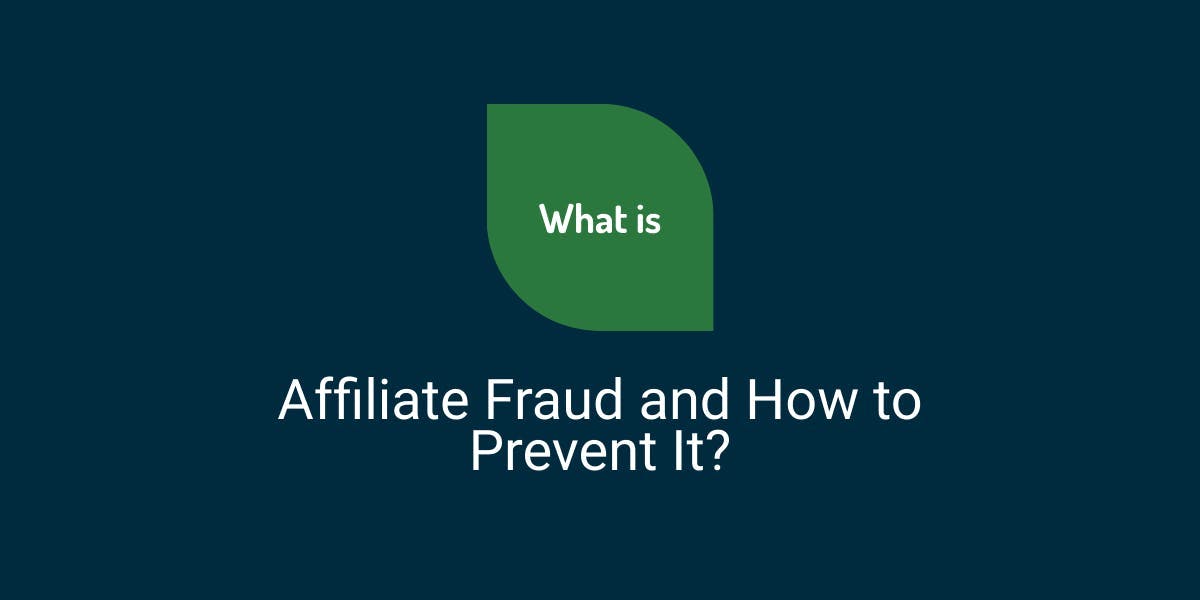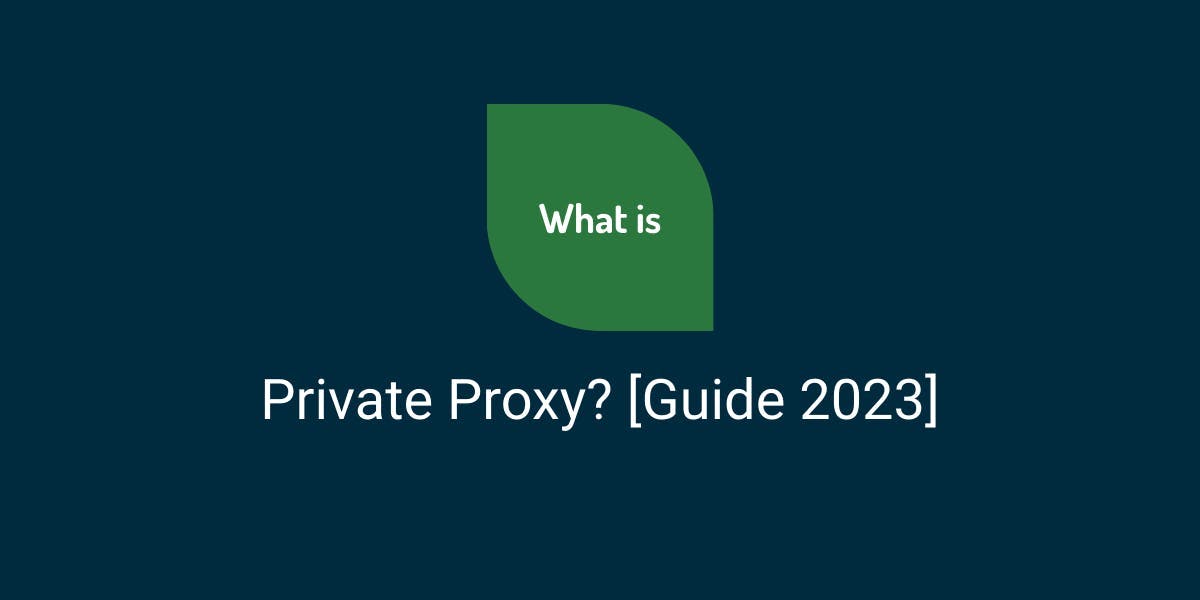What Is Affiliate Fraud and How to Prevent It?
Flipnode on May 29 2023

Affiliate marketing campaigns have become a prominent source of revenue for digital media businesses. With up to 15% of their earnings attributed to affiliate programs, this revenue stream has gained significant importance. The impact of the pandemic further boosted these numbers, as 42% of affiliate publishers reported a surge in site traffic during that period.
However, the rise of affiliate marketing also brings forth challenges, particularly concerning fraudulent activities. Malicious actors exploit vulnerabilities in tracking and attribution processes, manipulating them to earn undeserved commissions. Such fraudulent practices not only harm merchants but also undermine their businesses. It has been estimated that affiliate fraud amounted to $1.4 billion in 2020, and these figures are expected to continue growing alongside the expansion of the affiliate industry.
In this blog post, we aim to shed light on affiliate fraud by exploring the most common methods employed by fraudsters. Additionally, we will provide insights on how to identify fraudulent activities and offer valuable tips to prevent falling victim to these malicious actors.
What are the 3 main types of affiliates?
To grasp the concept of affiliate fraud and its various methods, it is essential to gain a clear understanding of what affiliate marketing entails and the primary types associated with it.
What is affiliate marketing?
Affiliate marketing is a form of advertising where a third-party publisher, known as an affiliate, earns a commission by promoting the products and services of another company. This commission is typically based on factors such as generating traffic and leads. The sales are tracked and attributed to the affiliate through the use of affiliate links, which direct users from one webpage to another.
The affiliate marketing industry is commonly categorized into three main types: unattached affiliate marketing, related affiliate marketing, and involved affiliate marketing. These categories help classify different approaches and strategies employed by affiliates in their marketing efforts.
Unattached
In the unattached affiliate marketing model, the affiliate has no direct association with the product or service they promote. They lack expertise or knowledge about the offering, which diminishes their authority and credibility. As a result, potential customers may be less inclined to trust their advice or recommendations.
Related
In related affiliate marketing, the affiliate has some connection to the product or service they are promoting. Typically, both the affiliate and the offering operate within the same niche. The affiliate possesses sufficient expertise and influence to drive traffic, and their authority in the field makes them a reliable source. However, they refrain from making claims about personal use or experience with the product or service.
Involved
In the involved marketing type, there is a deeper connection between the affiliate and the product or service. The affiliate either currently uses or has used the offering and openly shares its positive impact with potential customers. As a trusted source of information, the affiliate holds a position of influence. However, publishers engaged in such affiliate programs are more susceptible to reputational risks if the promoted product faces a crisis.
How does affiliate fraud work?
Affiliate marketing encompasses a range of pricing models that provide distinct payment structures for affiliates. Nonetheless, each pricing model carries its vulnerabilities that malicious actors can exploit to their benefit.
What is affiliate fraud?
Affiliate fraud refers to deceptive and fraudulent activities carried out to illegitimately earn commissions through an affiliate marketing program. It falls under the umbrella of ad fraud and involves various dishonest practices aimed at exploiting the system.
There are various affiliate fraud schemes associated with different pricing models:
- Cost per action (CPA): In this model, affiliates receive payment once a specific action is completed, such as a sale, registration, or click. Fraudsters engaged in affiliate fraud can exploit this scheme by using stolen credit card information and fake identities to generate fraudulent conversions.
- Cost per lead (CPL): Affiliates earn a commission when a potential customer signs up for a particular service or provides their information. Fraudulent affiliates may manipulate customer data, utilize bots to fill out forms, or even provide opt-out lists instead of legitimate opt-ins.
- Pay per click (PPC) or cost per click (CPC): Affiliate publishers are paid based on the number of ad clicks. Scammers deceive unsuspecting users into clicking on fraudulent links or employ automated methods to generate fraudulent clicks, resulting in click fraud.
- Cost per impression (CPI) and cost per thousand impressions (CPM): These pricing models involve payment for each potential customer who views the ad or every thousand potential customers who view the ad, respectively. Fraudsters create fake websites and employ bots to artificially inflate the number of ad views.
- Influencer scheme: Companies provide their products to online personalities with a substantial audience, such as bloggers or fashion influencers. In this scenario, fraudulent actors have opportunities to engage in scams, including creating fake accounts and artificially inflating numbers through bot-generated comments and views.
Affiliate fraud methods
Affiliate marketing processes primarily rely on automation, which often lacks direct human supervision. This creates numerous opportunities for fraudsters to exploit and manipulate these operations to their advantage. There are several affiliate fraud methods commonly used:
- Cookie stuffing: Fraudsters drop third-party malicious cookies onto a visitor's browser, causing affiliate programs to incorrectly attribute website traffic to the scammer. Legitimate affiliates who brought the traffic lose their rightful commissions, leading to their disengagement from the affiliate program. In some cases, website owners may be unaware of cookie stuffing, as certain extensions, like chatbots, surreptitiously place third-party cookies in visitors' browsers. This violates affiliate marketing compliance guidelines and even the European Union's General Data Protection Regulation (GDPR) since cookies are incorporated without users' knowledge or consent.
- Typosquatting: This affiliate fraud tactic involves registering domain names that closely resemble the merchants' domain names but with intentional misspellings. Users who mistype the URL are redirected to fraudulent domains, increasing the number of referrals for the affiliates. Typosquatting subtypes include frequent misspellings, misspellings based on published texts, plural or singular forms of the domain name, different top-level domain names, and misuse of country code top-level domains.
- Software Development Kit (SDK) spoofing: This type of affiliate marketing fraud is particularly lucrative when there is a cost-per-install pricing model. Fraudsters manipulate app SDKs to generate fake traffic and installs. They use malicious programs to track user activity and falsely indicate app installations. SDK spoofing is challenging to detect as all installs appear natural.
- Malicious adware: Fraudsters distribute malicious spyware to website visitors through pop-ups and other deceptive ad formats. This adware inserts code into users' browsers, artificially inflating traffic numbers reported to the merchant. Another form of malicious spyware is "loyalty" software, which affiliates install on visitors' computers to remind them of the benefits of buying from specific merchants. Fraudsters claim undeserved commissions when users reach the merchant's website through the affiliate's link.
These affiliate fraud methods exploit vulnerabilities in the system and can result in financial losses for legitimate affiliates, waste marketing budgets, and violate user privacy and data protection regulations.
4 ways to prevent affiliate fraud
No business is immune to the risks of affiliate marketing fraud, and it's important to take proactive steps to protect your business. Here are several effective strategies to prevent affiliate fraud and mitigate the negative consequences of fraudulent affiliates:
- Select affiliates carefully: Exercise caution when choosing potential affiliate partners, particularly during the early stages of collaboration. Implement a thorough application process and manually review new affiliates. Verify that their websites are legitimate and aligned with your company's products or services. Communicate your terms and conditions to avoid misunderstandings. Consider consulting with a legal expert to ensure your policies are robust and leave no room for abuse or fraudulent practices.
- Monitor traffic: Regularly and actively monitor your affiliate analytics to enhance fraud detection capabilities. Look out for unusual traffic patterns, page redirects, or a high volume of transactions originating from the same IP address. Keep track of your affiliates and diligently log their IDs in your system. This way, you can assess the effectiveness of their efforts in driving traffic and conversions. Over time, you will gather valuable information to differentiate reliable partners from potentially fraudulent ones.
- Enable device fingerprinting: Leverage device fingerprinting technology to analyze the digital footprints left by visitors on your conversion pages. This data includes device information, installed plugins, time zone, and more. By building visitor profiles, you can identify suspicious activity. For instance, if you notice repeated configurations appearing on your website, it could indicate fraudulent attempts to deceive your system.
- Utilize proxies: Employ proxies as a means to verify the trustworthiness of your marketing partners. Residential proxies are particularly suitable for testing localized affiliate content using IPs from specific regions. If you need to automate the testing process using software bots, proxies can help conceal your real IP address and avoid detection. Rotating proxies offer the added benefit of changing IPs at will, minimizing the risk of being flagged for suspicious bot activity. Proxies provide an additional layer of anonymity, allowing you to monitor your affiliate program partners without their knowledge.
Conclusion
Affiliate marketing is a highly effective method for generating online traffic, but it is not without risks. The prevalence of affiliate fraud poses a significant threat to your company's financial stability and reputation. Fortunately, there are proactive steps you can take to mitigate the risk of affiliate fraud. Specifically, you can implement rigorous traffic monitoring, leverage device fingerprinting techniques, and employ proxies as protective measures. By implementing these precautions, you can safeguard your business from the detrimental effects of affiliate fraud.



